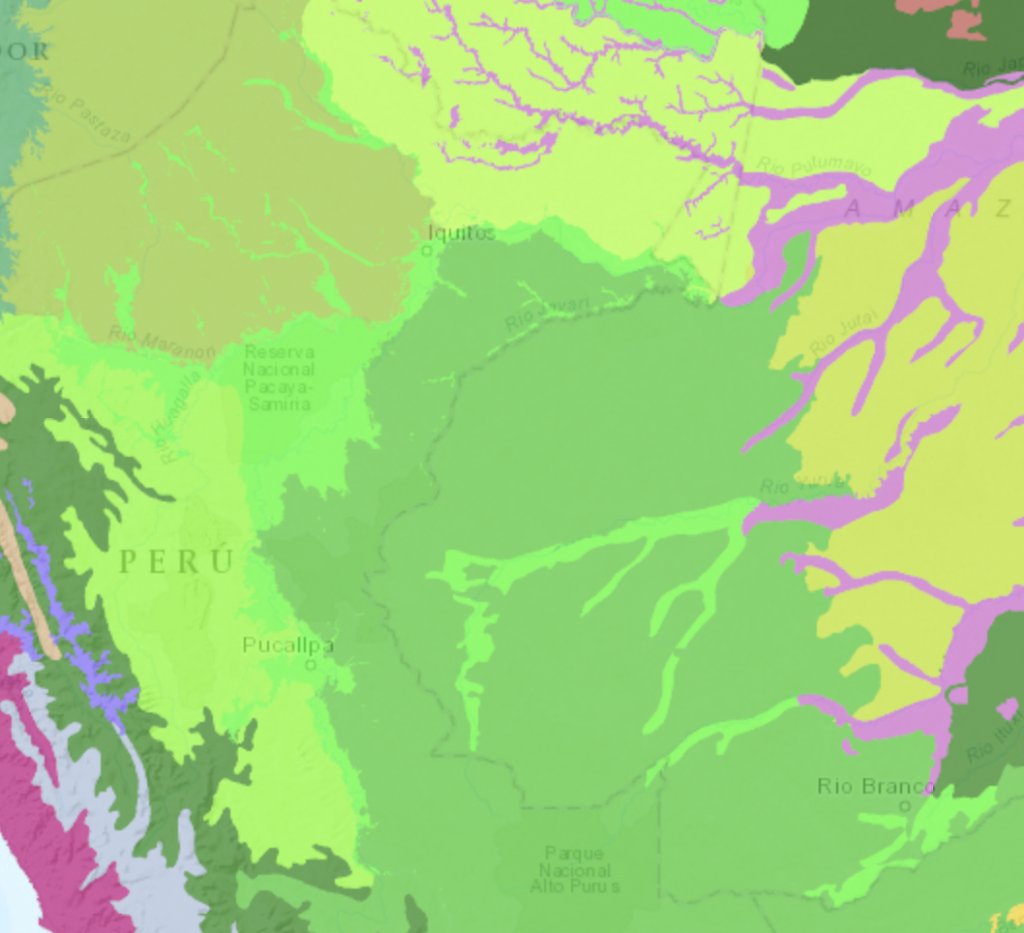This ecoregion, a light green colour in the image below, occurs in northwest Brazil, northeast Peru, and northern Bolivia. The várzea, or flooded forest, is found along seasonally flooded basins of tributaries of the Amazon and its upper tributaries.
The Iquitos várzea is also found along river sections within several other Amazon ecoregions. The southern sections of the Iquitos várzea are in the Southwest Amazon Moist Forests (NT0166). The várzea forms the eastern boundary of the Ucayali Moist Forests and the Napo Moist Forests nand penetrates along river courses into both these ecoregions. It forms the southwest boundary of the Solimoões-Japurá Moist Forests.

Description of the Ecoregion
As summarized in Wikipedia, the forests of the ecoregion can be described as follows:
The floodplain holds forest mosaics, succession forest, aquatic vegetation in areas that are poorly drained and permanent swamps. The dominant vegetation is evergreen tropical forest. A few meters difference in elevation can have a major influence on the forest composition due to the effect of flooding. The flora also vary considerably depending on the soil and the stage of succession.
Birds of the Ecoregion
Wikipedia notes that 624 species of birds have been reported. Endangered birds include the Wattled Curassow (Crax globulosa) and Green-thighed Parrot (Pionites leucogaster).